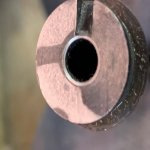BattleRife
CGN Ultra frequent flyer
- Location
- of No Fixed Address
I do not know "correct" answer, so reading this thread to learn. How can Post #8, " ... I seen 1022 with firing pin dents.", and Post #14, "Every single Ruger ever made has such a stop, ..." both be true?
Hmmm, I say that yes, it is possible. If one of the stop or the pin is made out of spec, or becomes damaged, you could have problems because the design is no longer functioning as intended. That is a malfunction, and of course any mechanical system can have malfunctions.
It also can cause the the metal of the pin to crystallize and become brittle, certainly a problem on older guns.
This one is a complete fairy tale. Essentially all solid metals are crystalline, it is not a failure mechanism, ever. Most brittle-appearing failures in metals are due to poor heat treatment, or corrosion mechanisms.








































































